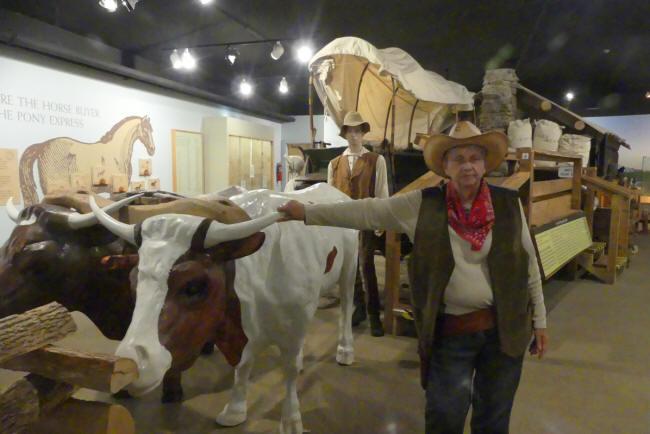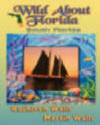Ride
with the Pony Express
Story and photos by Kathleen Walls
“Help wanted. Young, skinny, wiry fellows,
not over eighteen. Must be expert riders, willing to risk death
daily. Orphans preferred. Wages $25 per week.” Would you answer
this ad? During the 18 months the Pony Express was in
operation, over 230 young men applied and were accepted. Some
died in performance of their duties. Others went on to
different careers after the Pony Express ended.

The
Pony Express Museum in St. Joseph tells that story. It is
located at the site of the Pony Express stables and has one of
the original walls. Our docent, Annie, led us through the Pony
Express Museum. One of the first exhibits is a wheelwright’s
shop, the equivalent to a present-day tire shop. Adjacent to
the wheelwright is another business equally important at that
time, the blacksmith’s shop and forge. The forge was built by
Anliff Hyde. There’s a picture of his Hyde’s son, Calvin, taken
in 1960 when he was 92 inside the forge just before they
dismantled it.

One exhibit shows the first Pony Express rider, Johnny Fry, as he prepares to leave this same stable in St. Joe with the first batch of mail. Spectators cheered him on. The exhibit is so realistic and Annie, in her western costume, fit in like part of it.
There is an exhibit portraying William H.
Russell, Alexander Majors, and
William B. Waddell, the founders of the Pony Express.

Another shows a realistic covered wagon
drawn by oxen. Annie pointed out a common misconception. If you
were a westbound settler, you would walk alongside, not ride
inside the covered wagon. The wagon carried necessities like
food and precious items from your former home you hoped to take
to your new home. Settlers ended up discarded many items along
the way as it became a choice of lightening the wagon’s load or
losing all. You choose between your piano or your food. There
are some of the items found along the route that had been
tossed out to lighten the wagon load.
In front of the stagecoach exhibit, there
is a real well where we were able to pump water. Annie
explained it took a lot to water the oxen.
There’s an exhibit where you can mount a
wooden pony equipped with mochilas you can toss over a
different pony.
Since a horse can only run top speed about
10 to 15 miles, there were relay stations about that distance
apart on the routes. There would be a stationmaster and a horse
tender who would have a fresh horse ready for the rider who
would take his mochila, toss it on the new horse and continue
his run.
We
could enter a recreated rest stop cabin where the riders would
stay overnight. It was furnished with a simple bunk bed and
basics.
An exhibit telling the futures of many of
the riders is interesting. Johnny Fry, the first westbound Pony
Express rider, enlisted as a soldier in the United States
Cavalry and was killed by Quantrill’s Raiders during the Civil
War.

Another rider, Billy Fisher, who claims
his life was saved when he almost fell asleep under a tree
during a blizzard and a rabbit jumped on him and awakened him
saving him from freezing to death in his sleep. His
great-great-grandson, William Fisher, became an astronaut and
flew in the space shuttle. He took Billy’s belt buckle,now part
of this exhibit, into space with him.

William Cody, another rider, has a place
here. He became famous in later years under his better-known
stage name, Buffalo Bill. When he learned that Alexander
Majors, the founder who had originally hired him went bankrupt
in later years, Cody took care of him for the rest of his live.

The art in the
museum is fantastic.There are paintings and bronzes. I particularly loved one bronze
piece that
looked like a Remington, but was another artist. It was of a
wagon coming down a steep incline pulled by and horse.
There are an ox and a rider
alongside.
































